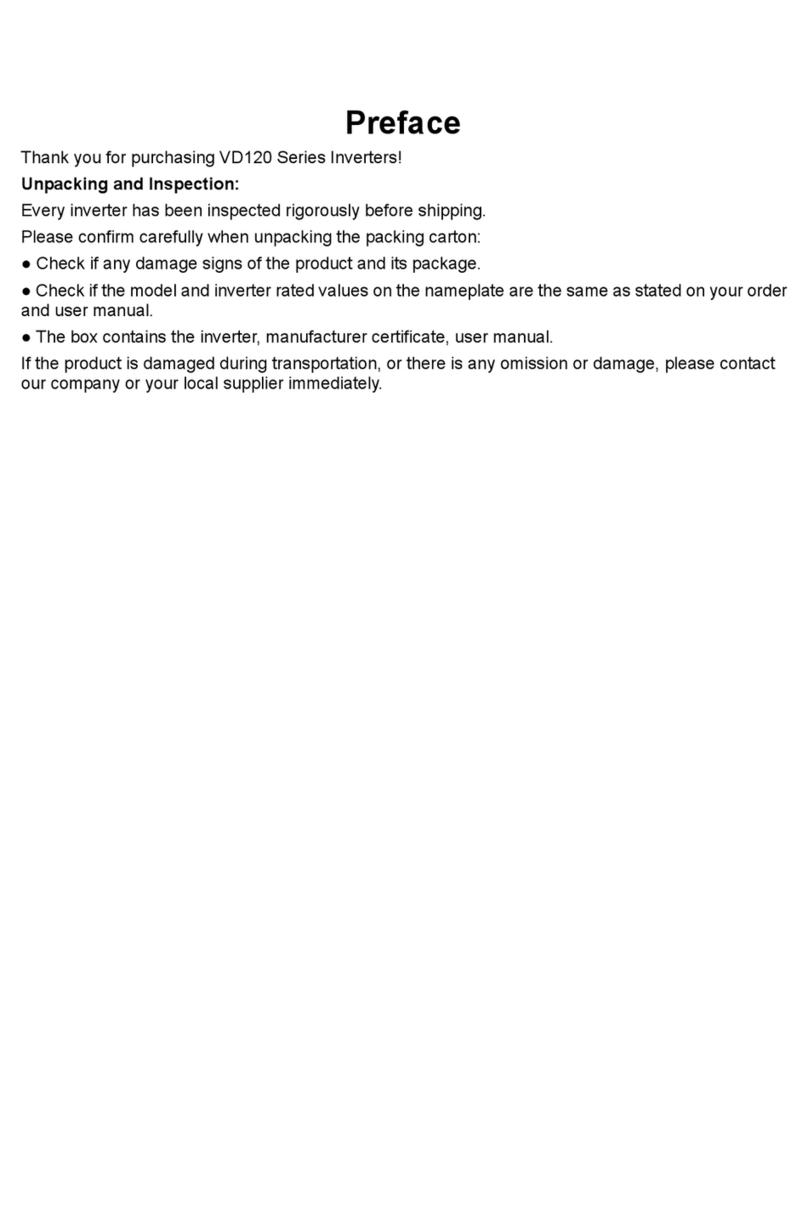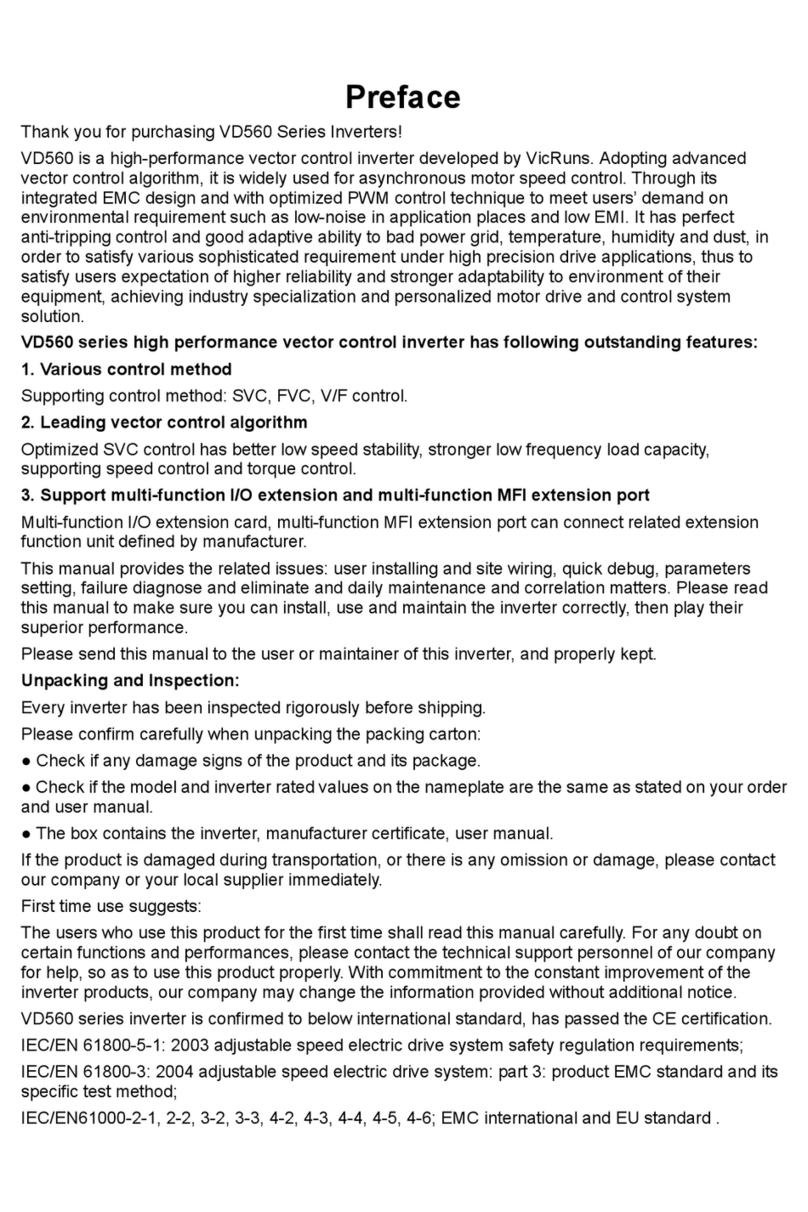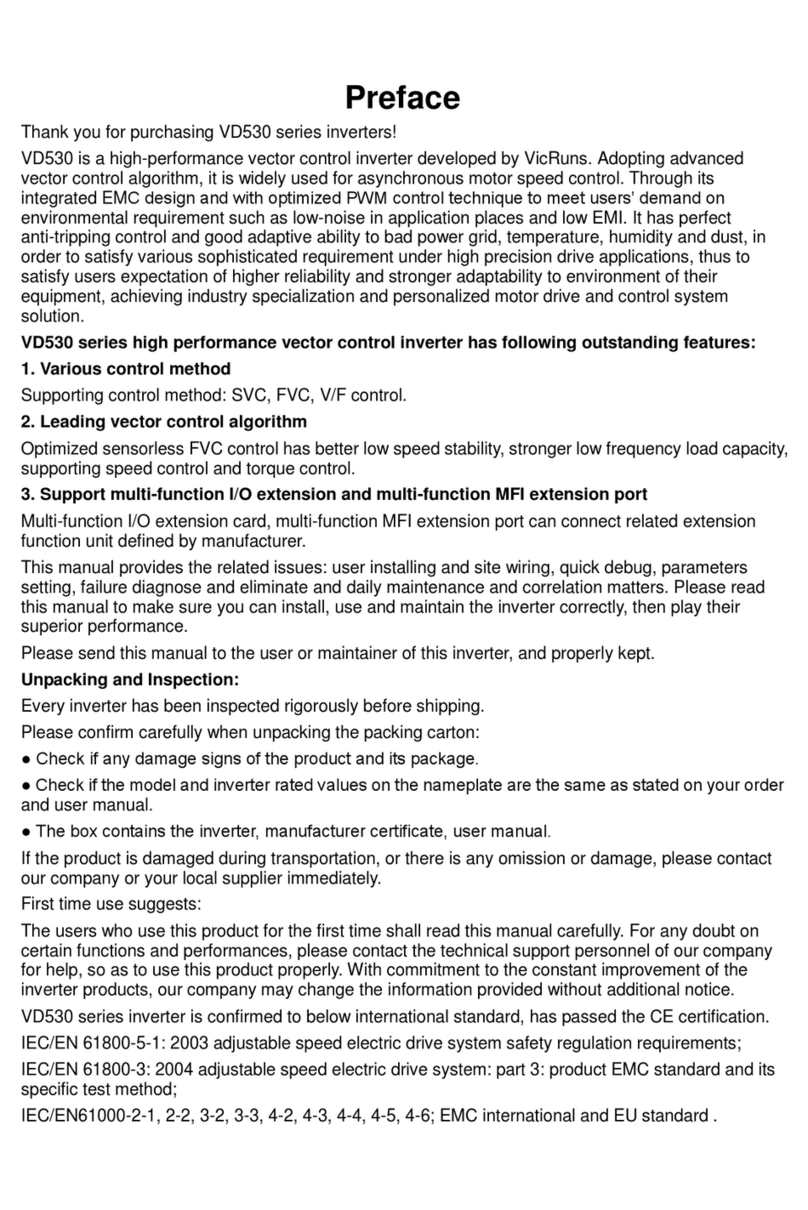
Contents
Chapter 1 Safety and Precautions............................................................................................................ - 1 -
1.1 Safety Definition ................................................................................................................................... - 1 -
1.2 Safety Precautions ............................................................................................................................... - 1 -
1.3 General Precautions ............................................................................................................................ - 3 -
Chapter 2 Product Information.................................................................................................................. - 6 -
2.1 Designation Rules................................................................................................................................ - 6 -
2.2 Nameplate............................................................................................................................................. - 6 -
2.3 Inverter Series ...................................................................................................................................... - 6 -
2.4 Product Specifications ......................................................................................................................... - 8 -
2.5 Physical Appearance and Main Structure Diagram........................................................................ - 10 -
2.6 Product Appearance and Installation Dimension............................................................................ - 11 -
2.7 Physical Dimensions Of External Keyboard ................................................................................... - 13 -
2.8 Braking Unit Model Selection Guide ................................................................................................ - 14 -
2.9 Routine Repair and Maintenance of Inverter .................................................................................. - 15 -
2.10 Warranty Introduction ...................................................................................................................... - 17 -
Chapter 3 Mechanical and Electrical Installation.................................................................................. - 18 -
3.1 Installation Environment .................................................................................................................... - 18 -
3.2 The Installation Direction and Space ............................................................................................... - 18 -
3.3 Removing and Mounting the Cover Plate and Keyboard .............................................................. - 19 -
3.4 Inverter and External Electrical Parts Connection.......................................................................... - 20 -
3.5 Standard Wiring Diagram .................................................................................................................. - 25 -
3.6 Main Circuit Terminals ....................................................................................................................... - 27 -
3.7 Control Circuit Terminal ..................................................................................................................... - 30 -
Chapter 4 Operation and Display ........................................................................................................... - 38 -
4.1 Introduction to Operation and Display Interface ............................................................................. - 38 -
4.2 Motor Parameter Self-learning.......................................................................................................... - 40 -
4.3 Password Setting ............................................................................................................................... - 41 -
4.4 Parameter Lock (authority lower than password)........................................................................... - 41 -
Chapter 5 Function Parameter Table ..................................................................................................... - 42 -
Chapter 6 Parameter Description ........................................................................................................... - 96 -
F0 Basic Function..................................................................................................................................... - 96 -
F1 Start/Stop Control Group .................................................................................................................. - 104 -
F2 Motor 1 Parameter .............................................................................................................................- 111 -
F3 Motor 1 Vector Control Parameter .................................................................................................. - 114 -
F4 Motor 1 V/F Control Parameter ....................................................................................................... - 117 -
F5 Input Terminal Group ........................................................................................................................ - 121 -
F6 Output Terminal Function Group ..................................................................................................... - 132 -
F7 Keyboard and Display Function Group .......................................................................................... - 137 -
F8 Protection Parameters...................................................................................................................... - 141 -
F9 Fault Record and Setting Parameter Group .................................................................................. - 145 -
FA Process PID Parameter Group........................................................................................................ - 149 -
Fb Enhance Function Group ................................................................................................................. - 154 -
Fd Communication Parameter Group .................................................................................................. - 169 -
FF User Parameters Group................................................................................................................... - 170 -
FP Factory Parameter Group................................................................................................................ - 172 -
A0 Motor 1 Torque Control Parameter Group ..................................................................................... - 173 -
AI Optimize Control Parameter Group ................................................................................................. - 176 -
A2, 3, 4 Motor 2 Parameter Function Group ....................................................................................... - 178 -
b0 User Customize Function Code....................................................................................................... - 179 -
b1 Virtual IO Parameter Group ............................................................................................................. - 181 -
b2 AI Curve Setting Parameter Group ................................................................................................. - 185 -
b3 AIAO Correction Parameter Group ................................................................................................. - 187 -
U0 Basic Monitoring Parameters Group .............................................................................................. - 188 -
































